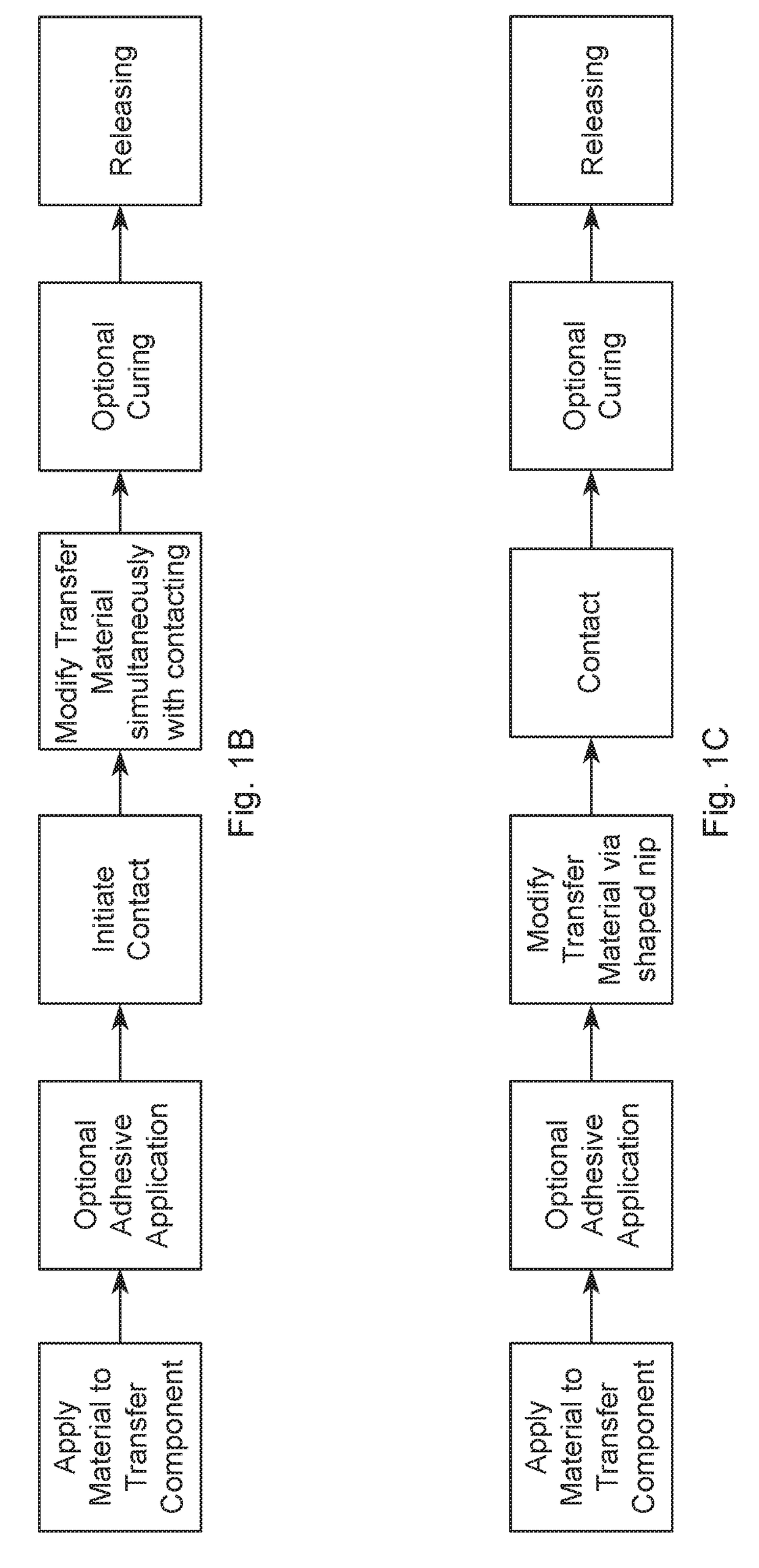Method and apparatus for applying a material onto articles with a pre-distorted transfer component
a transfer component and transfer material technology, applied in the field of apparatus and methods for applying a transfer material onto an article, can solve the problems of short distances of process accuracy, poor quality of labels that can be formed by printing directly on three-dimensional objects, and defects in print quality, so as to achieve a cleaner appearance and less radius of curvature
- Summary
- Abstract
- Description
- Claims
- Application Information
AI Technical Summary
Benefits of technology
Problems solved by technology
Method used
Image
Examples
Embodiment Construction
I. Introduction.
[0057]The present invention is directed to apparatuses and methods for applying a transfer material onto the surface of an article, including apparatuses and methods of transfer printing onto and / or decorating three-dimensional articles, as well as the articles having the transfer material thereon and / or are decorated thereby. The term “process” may be used herein interchangeably with the term “method”.
[0058]FIG. 1A is a flow chart showing an example of one category of processes for applying a transfer material onto the surface of a three-dimensional article. As shown in FIG. 1A, the process comprises steps of: (1) applying a material to a transfer component (for example, by digitally printing an image onto a transfer component); (2) optionally applying an adhesive to the material (such as the image) wherein the material and any optional adhesive comprise a transfer material; (3) modifying a portion of the transfer component containing the transfer material as well a...
PUM
| Property | Measurement | Unit |
|---|---|---|
| thickness | aaaaa | aaaaa |
| surface energy | aaaaa | aaaaa |
| thickness | aaaaa | aaaaa |
Abstract
Description
Claims
Application Information
 Login to View More
Login to View More - R&D
- Intellectual Property
- Life Sciences
- Materials
- Tech Scout
- Unparalleled Data Quality
- Higher Quality Content
- 60% Fewer Hallucinations
Browse by: Latest US Patents, China's latest patents, Technical Efficacy Thesaurus, Application Domain, Technology Topic, Popular Technical Reports.
© 2025 PatSnap. All rights reserved.Legal|Privacy policy|Modern Slavery Act Transparency Statement|Sitemap|About US| Contact US: help@patsnap.com



